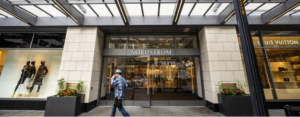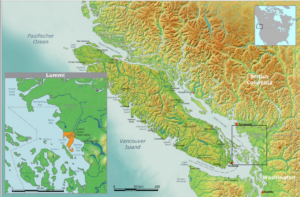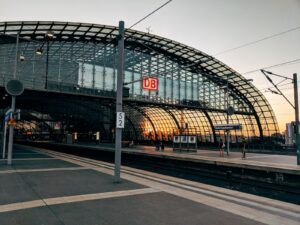One of the case studies for a human-centered design thinking approach is covered by the Clean Team Project. The Clean Team Project has set the goal to provide sustainable and affordable household toilets in Kumasi, Ghana which improve sanitation and health of the people. Ghanaians live in a developing country where usually around 32 people must share one household together without having a toilet included. These houses that include a toilet usually come with a rent for GH₵ 350 per month which is not affordable for an average Ghanaian. The alternative option is a low-cost room without a toilet which often costs around GH₵ 200 per month. Adding a toilet into their home include more costs than citizens can afford. According to the 2021 National Housing and Population Census of Ghana, about 18% of the households have no access to a toilet. Among those 18%, rural households (31.3%) lead over urban households (8.9%) in this census. Instead of having an own toilet in slum-like areas in Ghana, the citizens need to use public or shared toilets. Those toilets are usually far away from the houses, have long queues in front of their doors and provide unhygienic and unsafe room for the citizens. According to the United Nations, about 4.2 billion people have no access to careful managed sanitation worldwide. Also based on the information of the World Health Organization, 2 billion people use drinking water polluted by feces globally. Especially Ghana can be seen as one of the worst countries in regard to accessible basic sanitation (such as toilets).
How do bad toilet conditions damage Africa’s sanitation?
Ghanaian usually need to wake up at 5am early to avoid the queues in front of the public toilets. The toilets are often left under a bad condition for the following citizens due to the smell of urine, cigarette smoke, the collection of feces and the heat inside the toilets. Girls or women must avoid using them at night as these places can be dangerous for them when kidnappers or rapists appear. Also, the lack of toilets force women to lose focus on their menstrual health needs. Unsafe toilets cause more deaths among women than diabetes or HIV/AIDS. Avoiding public toilets can be though as well. Ghanaians often use a plastic bag where they put their feces and then throws them into an open drain which can lead to air or water pollution. Dirty water causes the spread of diseases in Ghana as 5000 out of 20 000 people are children under the age of 5 who become victims of diarrhea. Those cases are mostly caused because of poor sanitation and hygiene. Even the World Bank stated in 2012 that the lack of sanitation and hygiene results costs the country more than $79 million a year. What needs to be done is investing more in Ghana’s sanitation because access to sanitation is a human right and one goal of UN’s SDGs (to be more specific: it’s SDG 6 – Clean Water & sanitation).
Who participated in the project?
The Clean Team Project mainly addresses the low-income households in Kumasi where people have no private toilet included. Since the team used a more human-centered design thinking approach, they built the product based on the interviews they did with the inhabitants and sanitation experts. With the built prototype, they tested the project with about 100 families in Kumasi before launching it in 2012.
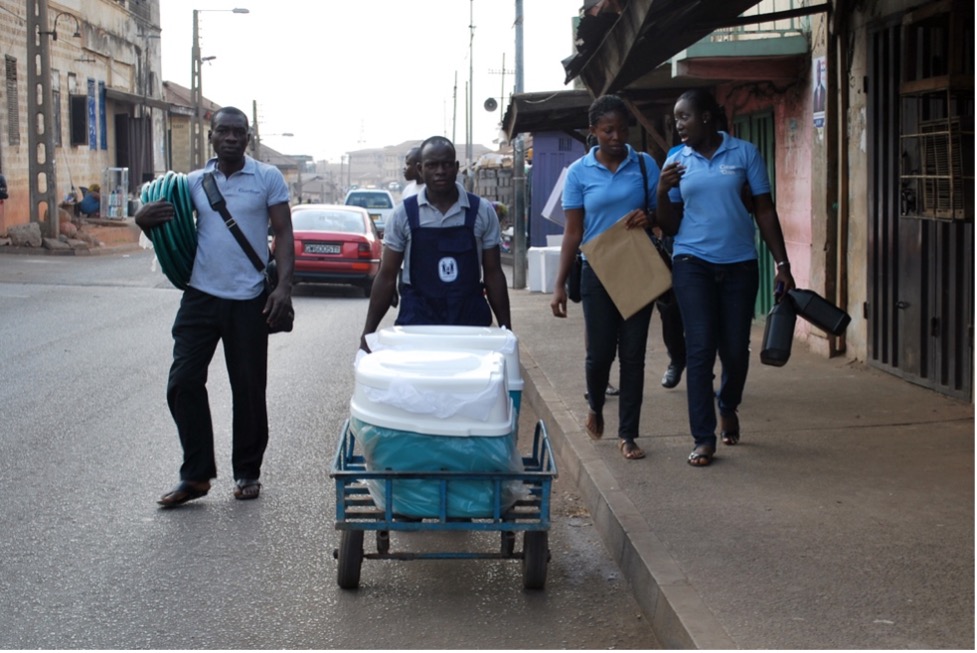
The clean team was created by IDEO.org which is a non-profit design studio. The people behind IDEO.org developed the branding strategy for the product and tried to scale the production of the toilets by finding sponsors & foundations. The Clean Team also works with the partners Unilever and WSUP (Water and Sanitation for the Urban Poor). These stakeholders have shared their knowledge and expertise with the Clean Team. They have also been interested in investing in a product for a developing country like Ghana. The project fits perfectly with Unilever’s “Sustainable Living Plan” which set the goal to improve people’s health & self-esteem. WSUP helped building the prototype by providing “off-the-shelf cabin toilets” to avoid expensive tooling for toilet manufacture. Now, Clean Team helps over 4500 people in Kumasi to improve sanitation systems and the use of private toilets.
Which activities needs to be done to build the product?
Using design thinking helps the project to work and think in the position of their addressed customers. According to an interview with the design director of IDEO.org, a human-centered approach is necessary to design solutions for big issues such as reduced access to toilets or clean drinking water. The human-centered design thinking and the design thinking itself can be seen separately or complementary. The human-centered design thinking differs a bit from the structure as it considers three steps (Inspiration, Ideation, Implementation) instead of five (Empathize, Define, Ideate, Prototype, Test).
Even though the Clean Team & IDEO.org mainly worked with the human-centered approach, the steps that are followed in both processes are almost similar to each other. The human-centered design thinking might sum up define & ideate with “ideation” and prototype & test with “implementation”. Design thinking considers technology, people and business while human-centered design focusses on considering humans as users.
The project started with the inspiration phase which can be similarly seen as the phase “Empathize”. It began by holding interviews with Ghanaians in different neighborhoods to understand the design challenge. The team asked the propositi about their lives and their toilet behaviors. They also talked with sanitation experts and did some research on toilet models that have worked or failed around the world. After reviewing the history of sanitation in Ghana, the team behind the project found out the connection between providing affordable toilets and reducing waste.
Based on this realization, they moved to the next phase called “Ideation” and collected possible prototype ideas that can later be tested and reviewed by the citizens. Clean Team worked close with their partners to build different kind of prototypes based on their gathered ideas and learned how to set the position of a service while also collecting thoughts on marketing approaches and technical limitations. After this phase was done, the ideas on the prototypes were implied to real life and with the help of the partners, the Clean Team could manage to build different functioning prototypes that came for 3-5 days to households in Kumasi. Families tested and reviewed different prototypes that each addressed different focus areas such as incorporating water for flushing, urine redirection or reducing the smell and spreading of bacteria. The prototypes gave the direction that the team need to consider for making a valuable product for their customers. For example: at first, Ghanaians said they would be fine with dealing waste on their own. But after they received the tank which came out of the toilet, they were convinced to pay for an external service that did the cleanup.
The last phase “Implementation” was slowly introduced. A live prototype was established by WSUP and the Clean Team and received great results in testing. This led to toilet production in 2012. Prototyping delivered benefits for the team because they could receive real-life feedback on their ideas by the users. The reactions were good and the team could figure out that the potential subscribers of the Clean Team Service would prefer a more sanitary route.
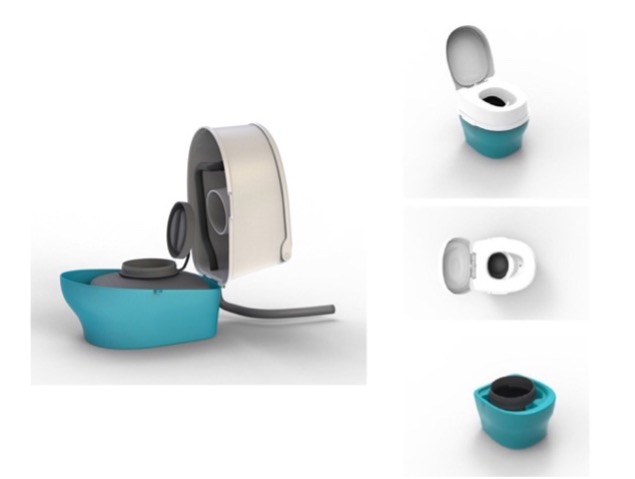
Of course, they optimized the product after receiving the user feedback and tested it again. Most of their physical prototypes broke as well. The final toilet design was simple and tried to redirect the urine to a separate container. It collected the waste in a container which can later be taken to neighborhood collection tanks.
Different countries prefer different toilet styles. Ghana prefers more the western style sit-on-top toilet which the Clean Team also considered while developing the product. Next to the product, the Clean Team also evaluated the brand, service and business model. After everything went well according to plan, the toilets and the service were established. Now it could be brought to the people in Kumasi.
What is the outcome of the project?
The project has turned out to have massive results in terms of satisfaction and usability for Ghanaian households since citizens realized the value of a service that takes care of waste removal. The Clean Team project is nothing else than a service and a toilet-provider for every low-income family in Ghana. The families pay a small monthly fee to have access to their own rented toilet and to the service that reduces waste. This service is promoted as a “Swap & Go” service on the official site. The waste will be collected weekly in sealed containers. Also, the service solves the water sanitation issue in Ghana as less people are forced to use unclean public toilets or throwing bags into open drains.
The outcomes after building and testing so many prototypes are a custom-designed rental toilet and a waste-removal system. The system is cyclical because the offered toilet collects feces in one place and the toilet can be easily put into the households. The waste is then used to generate electricity or create fertilizer in the village which could make life cleaner for the Ghanaians. Next to the improvement of the infrastructure, the system could also generate more jobs for the locals (according to a Korean paper). The paper also states that consumer-centered design leads to better results which can be seen in the Clean Team project.
The people behind the project makes clear that their mission is to “provide a world-class sanitation service”. Their future plan is to expand their business from Kumasi to Accra and other cities in Ghana.
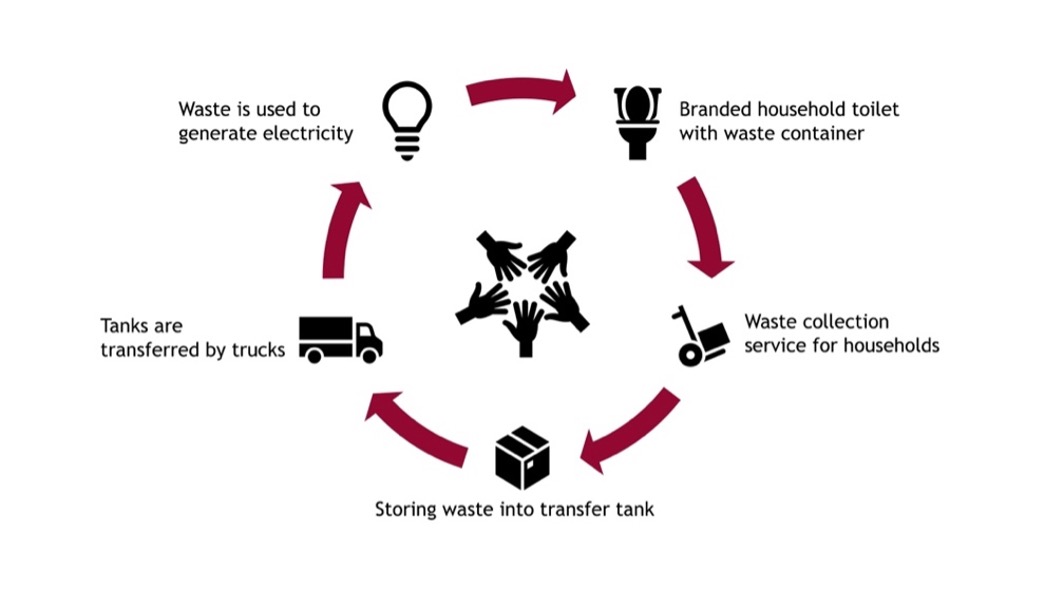
What can we learn from the Clean Team Project?
The Clean Team Project is a good example that shows the importance of community for problem-solving thinking like using a design thinking approach. According to an EY report, the Clean Team in Ghana are “pioneering the concept of CBS [container-based sanitation]”. From this valuable project, we can take away the following key learnings:
Feedback:
We could learn from the Clean Team Project that a strong connection to the customer’s needs speaks for the satisfaction and success of a new developed product. Based on customer feedback on the delivered prototype, the product can be optimized and rebuilt. A product always addresses a target group. To know the needs and values of the target group, a direct interaction through dialog would be recommended. You don’t design the product for your own profits, you design the product for a group to solve their issue. Engage the people you’re designing for.
Collaborate and keep eye on stakeholders:
The customers are your number 1 priority. But what might be equally important is the network of your business partners. The Clean Team couldn’t work on that project alone since e.g. manufacturing costs might be much higher if they didn’t decide to work with WSUP on the implementation. The support the team received from stakeholders made it easier for them to publish the toilets and cleaning services to Ghanian households. Do some research about potential stakeholders, talk with them and find out if their values fit with your project and if a potential collaboration might be a good match for both sides (win-win).
Do-mentality (prototyping):
Even though design thinking is necessary to make thoughts about a product and to evaluate ideas for prototyping, it’s always a good idea to just start with building a prototype and test it to potential users. Not only would it increase the quality of the product, but also the ease to use it. If you think too much without doing anything, there’s nothing that can be presented. If you constantly develop and test a prototype with a circular method, you can be much faster in the process. Launching a functional product to the market then comes earlier than you could ever imagine. The Clean Team developed different prototypes with different focus areas or features. They let the target group decide which features should be kept and which should be taken out by presenting them the different prototypes. The target group also receives a better look at the product when it’s built instead of seeing it being sketched on a board.
Clarify your positions:
Indeed, the “just do it”-mentality leads you to a more direct approach when it comes to realization. But that doesn’t mean that you should neglect the organizational structure and the strategic positioning. Thoughtful product design is as important as social innovation. It’s easy to say that there is an ongoing issue with developed countries due to lack of sanitation initiatives. This is a good chance to think about a solution for that specific issue. However, the next issue that might arise then for you could be the limitation you might face in correlation between low-income customers and product. You might need to know how to work with limited resources, services or infrastructures to provide new solutions. What’s also important is to consider that your product needs to be affordable for these customers if you really tackle the issue of sanitation (or any other issue related to developing countries). Having a deep understanding of the issue, the limited resources and the circumstances of the targeted society might help you to identify a solution which is human-centered in such scenarios.

